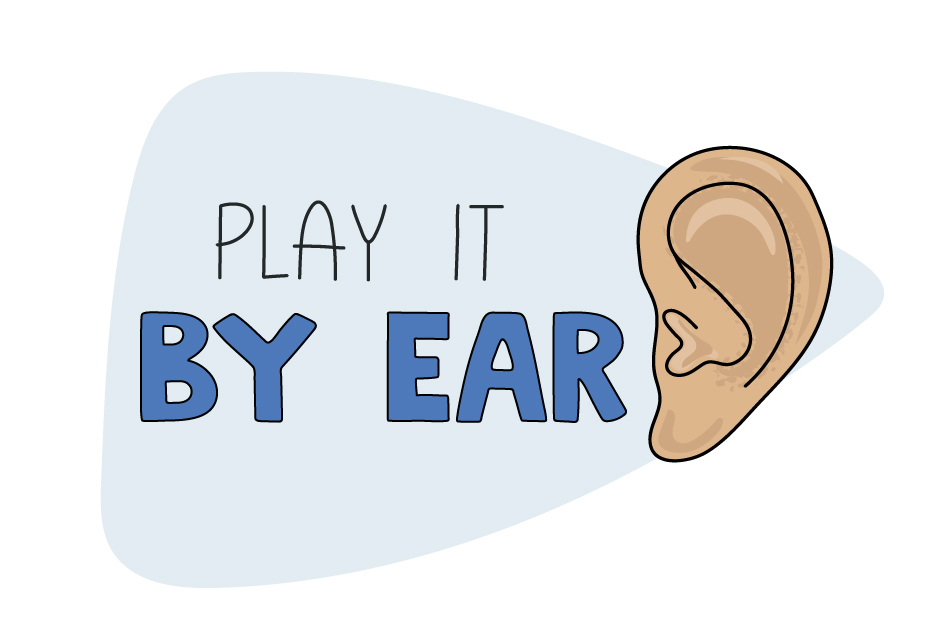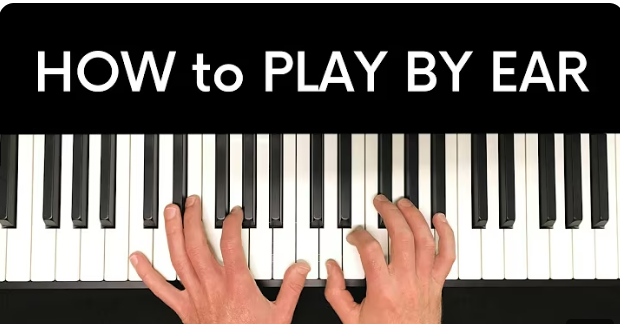Imagine sitting at a piano, letting your fingers glide across the keys, creating beautiful music without ever needing a sheet of notes. Sounds magical, right?
Learning to play piano by ear can transform this dream into reality. It’s not just about mastering an instrument; it’s about unlocking your creative potential and connecting with music on a deeper level. This approach allows you to play songs you love, understand music intuitively, and develop a unique style that’s all your own.
You might think playing by ear is reserved for the naturally gifted. But here’s the secret: anyone can learn this skill with the right techniques. Whether you’re a complete beginner or someone who’s tired of memorizing sheet music, this guide will show you how to harness your listening abilities and translate what you hear into harmonious melodies. Get ready to discover the tips and tricks that can make playing piano by ear not only possible but enjoyable and fulfilling. Dive in, and let’s unlock the musician within you!

Credit: www.youtube.com
Table of Contents
ToggleBenefits Of Learning Piano By Ear
Learning piano by ear enhances listening skills and musical intuition. It boosts creativity and personal expression. This approach also encourages a deeper connection with music, making it more enjoyable and fulfilling.
Learning piano by ear offers a unique set of advantages that can transform your musical journey. It fosters a deeper connection with music, allowing you to express yourself freely and develop a keen sense of auditory skills. This method encourages creativity and improvisation, making the learning process both challenging and rewarding. Let’s delve into the specific benefits of mastering piano by ear.
Enhanced Listening Skills
Learning piano by ear sharpens your ability to listen closely. You start picking up subtle nuances and variations in music, which might go unnoticed otherwise. This skill doesn’t just apply to piano but enhances your overall musical experience. You’ll find yourself appreciating songs in new ways.
Improved Musical Memory
When you rely on your ears instead of sheet music, your musical memory gets a workout. You start remembering melodies and chords more easily. This improved recall can help you play songs without needing constant reference, making performances smoother and more confident.
Greater Flexibility In Playing
Playing by ear allows you to adapt quickly. Have you ever had to play a song in a different key on the spot? With this skill, transposing music becomes second nature. It gives you the freedom to play with others and adapt to different musical settings.
Boosted Creativity And Improvisation
Without the constraints of sheet music, you’re free to experiment. You can mix up chords, try new harmonies, and create your own unique sound. This creativity spills over into improvisation, enabling you to craft impromptu pieces that reflect your personal style.
Increased Musical Confidence
Imagine walking into a room and playing a tune you just heard. Learning by ear builds this type of confidence. You trust your instincts and abilities, knowing you can tackle any melody that comes your way. It transforms you into a versatile musician ready for any challenge.
Personal Connection To Music
Playing by ear means you interact directly with music. You aren’t just following notes on a page; you’re interpreting sounds. This personal connection makes each performance feel more authentic and emotionally resonant. Are you ready to deepen your relationship with music?

Credit: www.youtube.com
Essential Listening Skills
Learning to play the piano by ear involves developing essential listening skills. These skills form the foundation of understanding music intuitively. By enhancing your listening abilities, you can identify melodies and reproduce them on the piano. Let’s explore key skills to help you on your journey.
Active Listening Techniques
Active listening is crucial for playing by ear. Focus intently on every note and rhythm. Avoid distractions to ensure a clear understanding of the music. Break down songs into smaller sections. This makes it easier to grasp complex pieces. Repeated listening helps reinforce memory. Listen to a variety of music genres. This broadens your musical vocabulary. Engage with the music emotionally. Feel the mood and dynamics of the piece. This emotional connection aids in remembering melodies.
Identifying Pitch And Tone
Recognizing pitch and tone is vital for ear training. Start by distinguishing high and low notes. Practice with simple scales and melodies. Use a piano or keyboard to match tones. This reinforces your ability to identify pitch accurately. Train your ear to hear subtle differences in tone. Notice how a note sounds in different contexts. This helps in understanding chord progressions and harmony. Consistent practice will improve your pitch identification skills over time.
Understanding Musical Patterns
Understanding musical patterns is essential when learning to play the piano by ear. Patterns in music are like clues; they help you predict what comes next. Recognizing these patterns can make your musical journey smoother and more intuitive.
Chord Progressions
Chord progressions are sequences of chords that create the harmony of a song. Familiarizing yourself with common chord progressions can enhance your ability to play by ear. Start with the I-IV-V progression; it’s a staple in countless songs across genres.
Try identifying the chord progressions in your favorite tunes. Listen closely and pay attention to the movement of the chords. As you practice, you’ll notice recurring patterns, such as the rise and fall, which can guide your fingers.
Think about the emotions each chord evokes. How does the shift from one chord to another make you feel? This emotional connection can strengthen your ability to predict and play the next chord by ear.
Melodic Structures
Melodic structures are the sequences of notes that form the melody of a song. To learn them by ear, focus on the intervals between notes. Recognizing these intervals can help you recreate melodies on the piano effortlessly.
Try singing or humming the melody before playing it. This vocal practice helps internalize the structure and makes it easier to translate to the keyboard. You’ll start to notice how certain melodies repeat or change subtly, allowing you to anticipate what comes next.
Consider the patterns in the melody. Are there repeating sections or themes? Understanding these patterns not only helps in playing by ear but also in appreciating the song’s composition.
Have you ever played a song entirely by ear? Embrace the challenge. It’s a rewarding experience that enhances your connection with music. What new patterns can you discover today?
Developing Rhythm Recognition
Learning piano by ear enhances rhythm recognition skills. It involves listening closely to melodies and mimicking them on the keyboard. This method helps to intuitively grasp musical patterns and improve auditory perception.
Learning to play the piano by ear is a rewarding journey, and developing rhythm recognition is a crucial step in this process. Understanding rhythm helps you play more naturally and connect deeply with the music. It involves training your ears to recognize patterns, syncopation, and timing in the pieces you love.
Syncopation And Timing
Syncopation adds complexity and excitement to music. It involves playing notes off the main beats, creating unexpected rhythms that catch the listener’s attention. To master syncopation, listen closely to songs with distinctive rhythms. Try tapping along to the beat with your hands or feet, focusing on how the rhythm shifts. Notice any off-beat accents or unexpected pauses. As you become more comfortable, replicate these rhythms on your piano.
Using Metronomes Effectively
A metronome is an invaluable tool for developing rhythm recognition. It keeps you on track with a steady beat, helping you internalize timing. Start by setting the metronome to a slow tempo and play a simple piece, focusing on aligning your notes with each beat. Gradually increase the tempo as you gain confidence. Challenge yourself with different time signatures and tempos. Have you ever tried setting the metronome to emphasize weaker beats? This can enhance your ability to recognize and play syncopated rhythms accurately. Developing rhythm recognition takes practice, patience, and a keen ear. Are you ready to transform your piano playing by mastering these rhythmic skills?
Ear Training Exercises
Learning to play the piano by ear is an exciting journey that opens up a world of musical possibilities. Ear training exercises are crucial in developing your ability to recognize and reproduce sounds effortlessly. These exercises sharpen your listening skills and build a strong foundation for playing any song without sheet music. You’ll soon find yourself connecting with music on a deeper level, as your ears guide your fingers across the keys.
Interval Training
Interval training is a powerful tool in ear training. It involves recognizing the distance between two notes. Start by listening to simple intervals like a major third or a perfect fifth. Play these intervals on the piano, and then try to sing them back.
Practice daily by picking random notes and identifying the interval between them. Use apps or online tools to test your skills. As you progress, challenge yourself with more complex intervals. Your ears will become more sensitive, and your ability to play by ear will improve dramatically.
Recognizing Scales
Understanding scales is essential for ear training. Begin with the major and minor scales. Listen to them repeatedly until you can hum or sing them without thinking. Notice how each scale has a unique sound.
Once you’ve mastered the basics, explore other scales like pentatonic or blues. Try playing them on the piano and identify their distinct characteristics. As you practice, ask yourself: How does this scale make you feel? What emotions does it evoke?
Engage with scales by playing melodies you know and identifying the scale used. This exercise will enhance your ear training and deepen your musical intuition. You’ll find yourself understanding music in a whole new way.

Credit: www.hoffmanacademy.com
Building Repertoire By Ear
Developing a piano repertoire by ear involves listening closely to music and recognizing patterns. This method helps improve musical memory and understanding. Practice regularly to enhance your skills, and soon you’ll be playing familiar tunes effortlessly.
Building a repertoire by ear is an exciting journey for any aspiring pianist. It’s about discovering the music you love and playing it without sheet music. This skill not only enhances your musicality but also boosts your confidence and creativity.
Learning Simple Songs
Start with simple tunes that are familiar and catchy. Think of songs you’ve heard countless times, perhaps children’s songs or popular hits. These songs usually have straightforward melodies and repetitive structures, making them easier to pick up by ear. Listen to the song multiple times. Pay attention to the melody and rhythm. As you listen, try to hum or sing along. Then, move to the piano. Begin by finding the starting note and work your way through the melody. Don’t worry about mistakes; they are part of the learning process. You might find it helpful to break the song into small sections. Focus on mastering each section before moving on. This technique ensures you don’t feel overwhelmed and helps solidify your learning.
Advancing To Complex Pieces
Once you feel comfortable with simple songs, it’s time to challenge yourself with more complex pieces. These may include classical pieces or intricate jazz tunes. They often have multiple layers and require a deeper listening. Complex pieces demand patience and perseverance. Listen carefully to identify different musical elements like harmony and dynamics. Take notes of any recurring motifs or patterns. Try playing along with recordings. This helps you stay in tempo and better understand the structure of the piece. Don’t hesitate to slow down difficult sections and practice them repeatedly. Building a repertoire by ear can transform your piano skills. What songs have you always wanted to play? Start with those, and watch as your confidence and ability grow.
Incorporating Improvisation
Exploring improvisation helps you learn piano by ear. It encourages creativity and enhances your listening skills. Play familiar tunes, experiment with variations, and develop a deeper connection with music.
Improvisation can turn your piano learning journey into an exciting adventure. It allows you to express yourself freely and enhances your ability to play by ear. By focusing on improvisation, you gain confidence and creativity, making your music truly unique. Let’s dive into how you can add improvisation to your piano practice.
Creating Melodic Variations
Melodic variations are a wonderful way to add your personal touch to a song. Start by playing a simple melody you are familiar with. Then, change a few notes or the rhythm to make it your own. Listen closely to how the melody sounds with each change. Does it still convey the same emotion? Experimenting with variations not only improves your ear but also makes playing more enjoyable. Try humming a tune and then replicating it on the piano. This exercise sharpens your ability to identify notes and enhances your creativity. Remember, there are no wrong notes in improvisation—just new opportunities to learn.
Exploring Harmonic Changes
Harmonic changes can add depth to the music you play. Begin with a chord progression you like and try swapping out chords. Notice how the mood of the music shifts with each change. If you’re unsure where to start, use a simple progression such as C-G-Am-F. Substitute different chords and see how it affects the overall sound. This practice helps you understand how harmony works and develops your ear for chord recognition. Consider what emotions different chords evoke. Does a minor chord make the piece sound sadder? Use this knowledge to enhance the emotional impact of your music. Incorporating improvisation into your practice routine can be both rewarding and enjoyable. By creating melodic variations and exploring harmonic changes, you open up a world of musical possibilities. Why not challenge yourself today and see where your creativity takes you?
Overcoming Challenges
Learning piano by ear is a rewarding journey, but it comes with its fair share of hurdles. Embracing these challenges can enhance your skills and deepen your musical understanding. Here, we tackle two common obstacles: frustration and motivation.
Dealing With Frustration
Frustration is natural when learning piano by ear. You may struggle to identify notes or replicate melodies. Remember, even seasoned musicians face this.
Break down the task into smaller steps. Focus on a few bars or a single phrase. Celebrate small victories to boost your confidence.
What helps you stay calm? Some find recording their attempts useful. Listening to these recordings can reveal progress you might miss in the moment.
Share your experiences with fellow learners. They might offer insights that transform your approach. A fresh perspective can be invaluable.
Maintaining Motivation
Motivation can wane when progress feels slow. Set achievable goals to maintain your momentum. Clear targets provide direction and purpose.
Craft a practice schedule that suits your lifestyle. Consistency is key, but flexibility ensures you stay committed without feeling overwhelmed.
Consider joining an online community. Engaging with others can reignite your passion. You might find encouragement in unexpected places.
Reflect on why you began this journey. Personal reasons often hold the strongest motivation. Allow them to guide you through tough times.
How do you keep your motivation alive? Share your tips, and you may inspire others. Your journey is unique and valuable to the community.
Utilizing Technology
Technology opens new paths to learn piano by ear. With modern tools, you can enhance your skills efficiently. The right apps and resources can simplify ear training. Let’s explore some useful options.
Apps And Tools For Ear Training
Several apps focus on ear training for musicians. These apps offer exercises to improve note recognition. They help you identify melodies and chords by sound.
One popular app, “EarMaster,” provides interactive lessons. It covers intervals, chords, and rhythm training. Another app, “Perfect Ear,” includes quizzes and theory exercises.
Using these tools regularly builds your listening skills. They enable you to recognize musical patterns faster.
Online Resources And Communities
Online resources can support your ear training journey. Websites like YouTube offer countless piano tutorials. These videos teach you how to play songs by ear.
Joining online communities helps too. Platforms like Reddit have groups for aspiring pianists. Members share tips and experiences about learning by ear.
Engaging with others keeps you motivated. You can ask questions and receive feedback. This interaction enhances your learning experience.
Frequently Asked Questions
Is It Possible To Learn To Play Piano By Ear?
Yes, learning to play piano by ear is possible. Many musicians develop this skill with practice and patience. Focus on listening carefully to melodies, harmonies, and rhythms. Training your ear helps in identifying notes and chords. Regular practice enhances your ability to play without sheet music.
Can You Train Yourself To Play By Ear?
Yes, you can train yourself to play by ear. Start by listening to music attentively. Practice identifying melodies and chords. Use apps or online resources to improve your skills. Consistent practice enhances your ability to recognize and reproduce sounds.
Is It Common For People To Play Piano By Ear?
Playing piano by ear is quite common. Many musicians develop the skill naturally through practice. It involves listening and replicating tunes without sheet music. This ability often enhances creativity and improvisation skills. Beginners can improve by training their ear with familiar songs and consistent practice.
Is Playing The Piano By Ear A Gift?
Playing the piano by ear is often considered a natural talent. Some people have this ability naturally. Others can develop it with practice and dedication. It involves recognizing notes and melodies without sheet music. While it may seem like a gift, skill improvement is possible for many with effort.
Conclusion
Learning piano by ear takes patience and practice. Start with simple tunes. Gradually, your skills will improve. Listen closely to each note. Play it back on your piano. Repetition is key. Each session builds your confidence. Feel the music. Let it guide your fingers.
Soon, patterns emerge. Recognize them. This enhances your ability to play. Celebrate small victories. They lead to bigger achievements. Keep your passion alive. Enjoy the journey. With dedication, you’ll play beautifully by ear. Remember, every note matters. Embrace the process.
Your musical adventure awaits.

